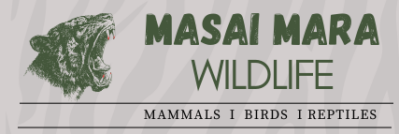- Common Names: Warthog
- Scientific Name: Phacochoerus africanus
- Swahili Name: Ngiri or Pumba
- Maasai Name: Olbitir
- Size:
- Head-Body Length (HBT): 200 cm (79 in)
- Shoulder Height (SH): 65 cm (26 in)
- Gestation: 20–26 weeks
Recognition and Appearance
Warthogs are unmistakable, with their large heads, prominent tusks, and wart-like facial growths. Their dark bodies are complemented by a shaggy reddish-brown mane that runs along their spine. The upper tusks, which protrude from the mouth, are the most noticeable and can grow quite long. However, the lower tusks are much sharper and more dangerous. These tusks are used for digging, self-defense, and combat between individuals.
One of their most iconic traits is their comical “tail-up” run. When they flee from danger, their tails stick straight up like antennas, making them easy to spot as they scurry across the plains.
Habits and Behavior
- Social Structure: Warthogs are diurnal and are usually found in small family groups, called sounders, that consist of females and their young. Males are generally solitary but may join these groups during the mating season.
- Feeding Habits: These animals are primarily grazers, feeding on grasses, roots, tubers, and rhizomes. Their strong snouts and tusks are used to dig up food from the ground. Although herbivorous, they will occasionally scavenge, especially when nutrient-rich food sources are scarce.
- Escape Behavior: Warthogs are prey for many predators in the Masai Mara, including lions, leopards, cheetahs, and even birds of prey that target piglets. Their primary defense mechanism is to bolt to their burrow or bolt-hole, where they reverse in and face any predator head-on with their tusks. This often proves successful and can even result in injury to predators, particularly lions.
Where to Find
Warthogs are common and widespread throughout the Masai Mara, inhabiting open plains, savannas, and the edges of forests. They thrive in areas with abundant grasslands where they can forage during the day. They can often be seen grazing on lawns in some safari camps, where they have become habituated to human presence.
Diet
- Feeds on: Warthogs primarily eat grasses and underground food sources such as roots, rhizomes, and tubers. Their tusks and snouts are designed for digging into the soil to unearth these nutritious plants. While primarily herbivores, they may occasionally scavenge and are known to eat carrion if the opportunity arises.
Predators and Defense
- Primary Predators: Lions, leopards, and cheetahs are the main predators of adult warthogs, while piglets are particularly vulnerable to birds of prey and other carnivores. Warthogs are known for their strong defensive tactics, often bolting to a nearby burrow to escape danger. When cornered, they will reverse into their burrow and face predators with their sharp tusks.
- Tusk Defense: The tusks are formidable weapons, and warthogs can cause serious injury to predators that attempt to attack. This makes them a more difficult target than their relatively small size might suggest.
Conservation Status
- IUCN Status: Least Concern. Warthogs are abundant throughout much of their range in sub-Saharan Africa, including the Masai Mara. Their populations are stable, thanks to their adaptability and the protection afforded by wildlife reserves like the Mara. However, habitat loss and hunting can pose localized threats to populations outside of protected areas.
Interesting Facts
- Personality on Safari: Warthogs are often a favorite among safari-goers because of their quirky appearance and behaviors. Their curious personalities and the tail-up run make them endearing animals to observe.
- Warthogs vs. Humans: Despite their sometimes-friendly behavior in camp settings, warthogs are still wild animals. Their tusks are incredibly sharp and should not be underestimated, even if they appear tame.
In conclusion, the warthog is a fascinating and charismatic species that plays a vital role in the ecosystem of the Masai Mara. With their distinctive looks, strong social bonds, and sharp tusks, they offer safari-goers a memorable experience. Whether grazing peacefully on a lawn or bolting into a burrow, warthogs never fail to entertain.
